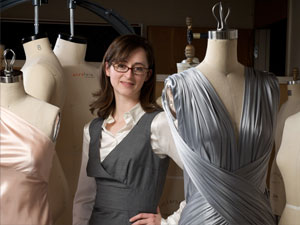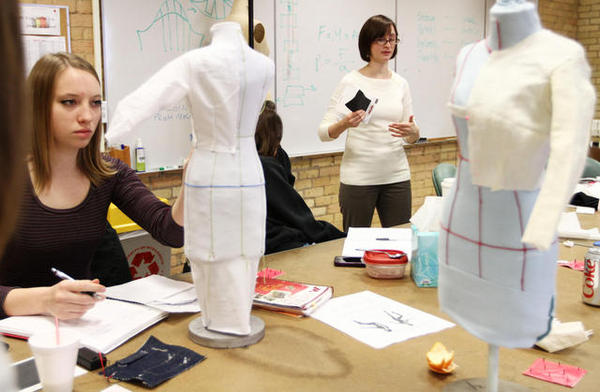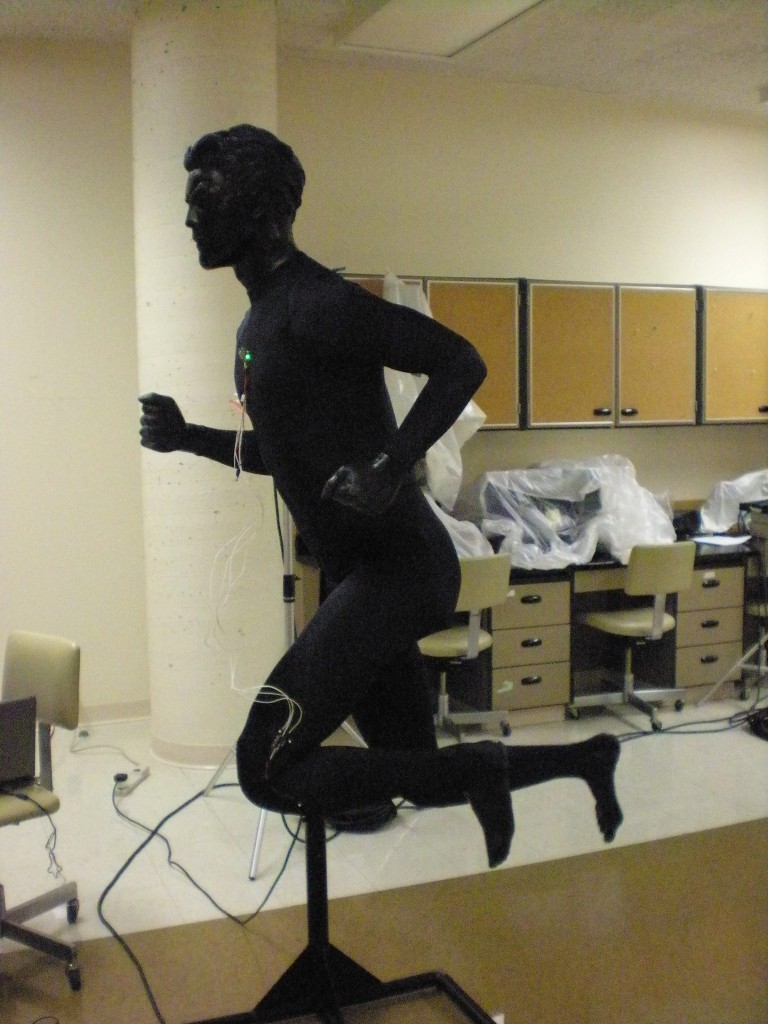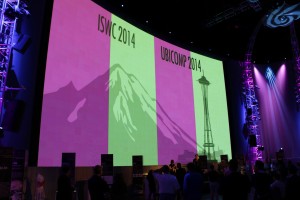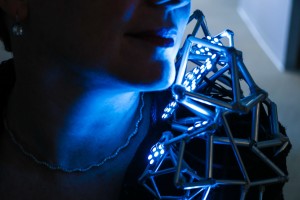I’ve known Lucy Dunne for 4 years now, we work in the same research area and attend the same conferences. This year Lucy is the International Symposium on Wearable Computer’s Design Exhibition Chair. Here is her Short Bio:
Lucy E. Dunne is an Associate Professor at the University of Minnesota, where she sits on the faculty of Design, Housing, and Apparel and Human Factors and Ergonomics, as well as holding affiliate membership in the graduate faculties of Electrical and Computer Engineering, Computer Science, and the Institute for Health Informatics. She received BS and MA degrees from Cornell University in Textiles and Apparel, and a PhD in Computer Science from University College Dublin, as well as an AAS in Electrical Engineering Technology from Tompkins-Cortland Community College. Her research is focused on wearability and wearable technology and explores new aesthetics and functionality in apparel, human-device interface, and human factors of wearable products. She directs the UMN Wearable Technology Lab, and in 2013 received the CAREER award from the National Science Foundation in support of that research.
CZ: As an expert in both Fashion Design and Wearable Technology do you see any parallels between the two in how people adopt new trends. What are the new trends, how do I know I’m wearing my technology in the most stylish way?
LD: I think the two are tightly intertwined, but that currently we tend to focus more on the adoption (attractiveness) of the technological innovation and neglect the aesthetic aspect. That’s not to say that new wearable technologies aren’t designed with aesthetics in mind, but that they tend to implicitly assume that we can impose a new aesthetic onto current habits. Which, historically, is usually not the case — usually the evolution is much more gradual. So, I’d say that in fashion we look at what people are wearing, and we look at new concepts, and we walk gradually from what’s happening now toward the new concept (and which concept we walk toward is highly influenced by subtle and complex cultural variables like identity and social values). In technology, we are more likely to be willing to make a bigger leap (in the “where is my jetpack??” kind of way) that’s motivated more by extreme novelty. For example, if jetpacks were really an option there would be a significant portion of the population who would want to make that radical change in behavior, but if we tried to make a cyborg look (maybe with something aesthetically extreme like an EEG cap) “happen” in fashion, it would be a much harder case to sell. In fashion, there’s a fine line between looking edgy and looking silly, so you have to tread more carefully. It’s not just about novelty, it’s also about appropriateness. In technology, things are more about what we can do, but in fashion things are more about who we are….and that is in many ways a much weightier and more profound question, despite fashion’s “shallow” reputation.
CZ: Speaking of trends what do you think the must have item will be for the cool kids of the future? 5 years, 10 years out?
LD: Yikes, I wouldn’t know where to start….. but I’d say it’s likely to be much more similar to what we have now than we might currently imagine. Think back 5, 10 yrs…. we were working on a lot of the same concepts then and wearing things that look pretty similar to what we’re wearing today. I think the details of our experience will be different, but the objectives won’t have changed that much.
CZ: What exciting projects are you working on right now?
LD: So many exciting projects! We’re working on augmenting the sensory perception of first responders…. developing a set of everyday clothes that detect activity and can add a contextually-aware layer to any number of other technologies….. designing a versatile, adaptable garment platform for all kinds of applications …. measuring the comfort of clothing …. and students in my lab are developing things like smart knee braces, therapeutic gloves, and shirts that measure breathing, amongst other things. There are so many projects I sometimes lose track of them all — a very good problem to have.
CZ: How is the running mannequin doing, is he tired yet? Does he have a name?
LD: His name is Sisyphus (of course) and he’s tireless! I like to tell people he’s my most reliable piece of lab equipment, and my most compliant subject. When he’s not being hit on by lab visitors we use him as a tireless human subject, to test new body sensors and to measure the way that a garment moves over the body surface. (We use this information to evaluate how much “noise” or error a wearable sensor might experience.)
CZ: Recently our students met up at a NASA Wearable Technology Symposium, did you get any ideas for the next generation space suit?
LD: Lots of new ideas from that great symposium! There is so much potential, and the EMU suit is such a complex and wonderful example of functional clothing and wearable technology. One of the students that participated in that symposium is now working at Johnson Space Center as an intern, on e-textile projects, and is having an amazing experience so far. Another student will continue her project (which focused on controlling the build-up of moisture in the EMU glove) in the fall as an Honors capstone project. (She’s hoping to test it on a parabolic flight!) We’re looking forward to next year and a new batch of interesting space problems….
CZ: What is the perfect outfit for space travel? I think this is actually an important question with the advent of space tourism.
LD: Well the perfect outfit depends on the environment…. and Mars is a different case than the Moon or the ISS. Longer-term missions also impose new criteria….but in general, something suited to negotiating the relationship between the body’s needs and the environmental context, that has as little mass as possible, and is maximally versatile and durable. And fire-resistant, just in case.
CZ: You are this years Design Exhibition Chair for the International Symposium on Wearable Computers 2013. Why should I, or anyone submit to the competition? Who can submit and how? Where will the exhibition be held? Who can come to see the exhibition? I ask these questions for you as a past Design Exhibition Chair myself.
LD: ISWC is one of the foremost venues for research and development in wearable technologies. It’s a great community full of really smart, creative people — the design exhibition is our means of focusing attention on the cutting edge in design of wearable products, and of highlighting new talent in this area. It’s open to anyone practicing in the field, designing wearable technologies. This year we have two tracks — one focused on functional use of technology, and one focused on aesthetic use. I think aesthetic applications are relatively under-explored in the field, and I’m really excited to see the entries in that area! The exhibition will take place at the conference in Zurich, Switzerland on Sept 10th 2013. Info about the exhibition and submitting work is here: http://www.iswc.net/iswc13/calls/designexhibition.html and the deadline is really soon — June 30th.
CZ: Finally is there a question I should have asked and didn’t? Is there a link or something we must see or know about?
LD: Yes — make sure you keep your eye on ISWC and the design exhibition, we are already planning 2014 and we think it will be a big year with some exciting surprises in store…..
CZ: Thanks Lucy! See you in Zurich!

